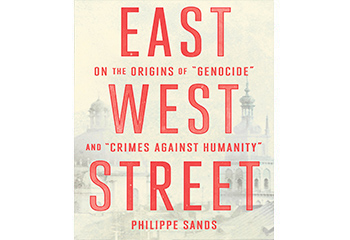Two years before the last millennium drew to a close – some 50 years after the conclusion of the Nuremberg Trials – the International Criminal Tribunal convicted John-Paul Akayesu of the crime of genocide and of crimes against humanity for acts he committed and oversaw while mayor of the Rwandan town of Taba.
It was the first time an international court had convicted anyone for the crime of genocide.
Less than a year later, while he was president of Serbia, Slobodan Milosevic was charged with having committed crimes against humanity. It was the first time a serving head of government was indicted for alleged crimes against humanity. After he left office, two years later, he was also charged with having committed genocide.
Today, more than a decade and a half after Akayesu’s conviction, “crimes against humanity” and “genocide” are no longer considered novel legalisms. They are part of international legal jurisprudence.
But this is a recent development.
The protection of minorities from oppression, persecution and abuse by their own governments was a radical idea in the early decades of the 20th century. States were sovereign, and this sovereignty was a permanently impenetrable shield defending even the most outrageously cruel regime against the reach of international law. The actions of rulers, governors or politicians against their own citizens – however harsh, brutish or even murderous – were not actionable in any international court of law.
Two jurists from Lemberg (also known as Lvov and Lviv) in eastern Europe – Hersh Lauterpacht and Rafael Lemkin – changed this. Each one, working entirely independently of the other, indeed aiming at diametrically opposite results, altered the course of modern legal history.
Philippe Sands, a renowned international lawyer, human rights advocate, scholar, author and professor of law at University College in London, has written a masterful legal history of the seminal work of both jurists. In East West Street, Sands has compiled a scholarly chronicle of the origins of the legal terms “genocide” and “crimes against humanity” and the legal doctrines that underpin the terms.
Sands wrote the book because of a startling realization. “It seemed more than just a coincidence that two men who did more than any others to create the modern system of international justice should have origins in the same city.”
He was determined to explore why and how the two men arrived at their legal innovations. What were the unique circumstances of their lives in the early 20th-century in Lemberg and environs that led them, inexorably it seemed to him, to became bold, courageous legal pioneers?
To this surprising coincidence Sands adds the remarkable fact that his own grandfather was born in Lemberg. Sands’ determination to explore a watershed moment of legal history became a mission of personal discovery, too. These lines of history, scholarship, courage, survival, legal innovation and justice converge in Sands’ compelling book.
Like a surveyor mapping every relevant dimension and detail, Sands traces the lines of the three men’s lives. There are many gaps, and one might even say mysteries regarding his grandfather’s life and the rescue of his infant mother from Vienna to Paris during the war. Sands closes those gaps with captivating writing.
East West Street rises far above a “mere” research tome of legal history. It soars into memoir, law, Holocaust study and philosophical inquiry. Sands is a superb writer. He combines the litigator’s obsession for detail, the investigator’s forensic need to follow every clue to its logical end with the skill of a deft mystery writer.
The book is never dry or daunting as one might expect for a primarily legal subject. Rather, Sands humanizes his explorations by including many small but illuminating details of Lauterpacht’s and Lemkin’s lives. He speculates constantly and generously about the effect of those many details on the ultimate outcomes of the jurists’ work. But into his search into the origin of the concepts of “genocide” and “crimes against humanity” Sands movingly intersperses his personal quest for the truth of his family history. The combination is powerful.
The terrain in which the three lives intersect, of course, is the deeply troubled, trampled Europe of the first half of the last century. The emotional and legal culmination of the story occurs at the Nuremberg Trials, where “crimes against humanity” and “genocide” first enter the record of international criminal law. The testimony from the trial is recorded thoughtfully, tenderly as “moments of living pity,” to quote the writer Rebecca West, whose words Sands records.
Sands admires both Lauterpacht and Lemkin, though the two legal scholars were so very different in manner and temperament. “The two men shared an optimistic belief in the power of law to do good and protect people, and the need to change the law to achieve that objective. Both agreed on the value of a single human life and on the importance of being part of a community. They disagreed fundamentally, however, on the most effective way to achieve the protection of those values, whether by focusing on the individual or on the group.
“Their ideas have had a global resonance, the legacies reaching far and wide. The concepts of genocide and crimes against humanity have developed side by side, a relationship that connects the individual to the group.”
East West Street poses the vital question: how can we uphold a global moral order? Sands has dedicated his professional life in search of an answer.
In East West Street, however, Sands also dedicates considerable literary skill in search of the missing details of an incomplete family portrait.
The combination is extraordinary.
